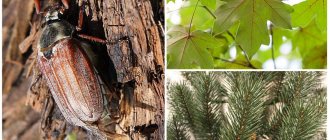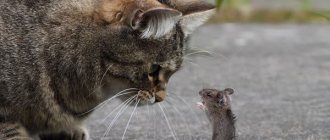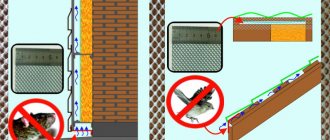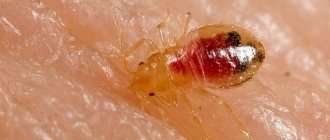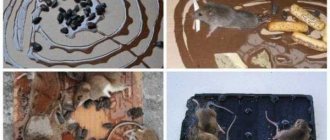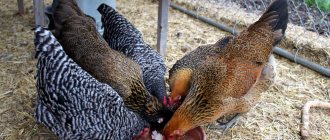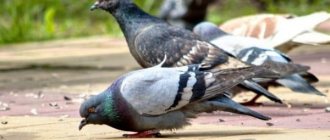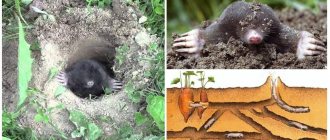Care and maintenance
African pygmy hedgehogs are not capable of living in their natural environment. Decorative animals cannot tolerate low and high temperatures. Therefore, it is necessary to maintain a certain microclimate in the room. The temperature there should be between 20-25°. If this indicator drops to 15°, the animals will hibernate.
Cage and filler
A decorative exotic living in an apartment needs a spacious cage with a solid bottom measuring at least 60 x 60 cm. It must be equipped with strong, thick bars through which the pet cannot get out.
It is recommended to cover the floor with a uniform layer 1.5-2 cm thick of birch sawdust, granulated paper or special filler. The filler needs to be changed as it gets dirty, but at least once a week.
African pygmy hedgehogs are quite shy, so the cage must have a house in which they can hide. It is also recommended to install a running wheel with a diameter of about 30 cm, a well-fixed drinking bowl, a heavy feeder and a tray.
The prickly animal is a big fan of entertainment. You can buy tunnels, balls and bells as toys for your animal.
Hygiene
In order for a decorative animal to have a neat appearance, it must be properly cared for. To eliminate parasites, heavy dirt and unpleasant odors, your pet needs to be bathed. It is recommended that the animal undergo bathing procedures no more than 1-2 times a month.
The pet is slowly immersed in a basin of warm water, carefully supported by the upper part of the body. First, thoroughly wash the paws and stomach, and only then begin to treat the back.
The pet's spines are carefully washed with a toothbrush and baby shampoo. Upon completion of the procedure, the animal is thoroughly rinsed, wrapped in a towel and waited for it to dry.
Taming
For a pygmy hedgehog to become a true friend, it needs to be educated. You can influence the character of a prickly pet if it is not yet 6 months old. Since the animal sleeps during the day, it is better to get acquainted with it in the evening. In order for an African hedgehog to get used to a human voice, you need to talk to him quietly and affectionately for 20 minutes a day.
To accustom it to the owner's smell, any item of the owner is placed in the animal's cage. And in order to establish close contact, they try to feed the pet more often from the palm.
When the animal gets a little used to its owner, you can try to lift it by its abdomen. If the pet produces thorns, it is handled with a towel or blanket. The animal must not be picked up from above. In order for the pet to calmly accept tactile contact, the palm is extended towards it from the side of the head. Then the animal will see her and calm down.
What does a long-eared hedgehog eat?
In addition to the familiar species of hedgehogs, there is another species that lives on European territory - the long-eared or desert hedgehog. The difference lies in its appearance; it has long legs and ears measuring about five centimeters.
This type of hedgehog lives mainly in deserts or steppes; its spines are located only on its back. The paws and abdomen are covered with light gray hair. The diet of the long-eared desert hedgehog is similar to that of a regular hedgehog. What the long-eared hedgehog eats are spiders, ants, snails, slugs and centipedes. These touching creatures can eat toads, lizards, small birds, and do not refuse seeds and fruits. A desert hedgehog can survive without food for up to ten days. Although this happens very rarely. Another difference from a regular hedgehog is that the long-eared hedgehog may not hibernate in warm areas. But where natural conditions are colder, the desert hedgehog also goes into hibernation during the cold season.
If you suddenly encounter an animal on your property, try to move it closer to its natural habitat. This will save you from death. Remember that, first of all, this is a wild animal and it is quite difficult to tame it.
In addition, with its nocturnal life cycle, the hedgehog will only disturb you, because when it moves, it stomps quite loudly, and its snoring while awake is also quite loud. In addition, hibernation and the smell of the animal are also two important points that will prevent you from keeping a hedgehog at home without violating your comfort zone.
Distribution area and habitat of the hedgehog
Hedgehogs are distributed unusually widely throughout the entire territory of our planet.
These unusual animals live in Europe, across a vast territory of Russia, Asia, New Zealand and even Africa. For its life, the hedgehog usually chooses forests, copses, plains with grassy vegetation, steppes, floodplains, near water bodies, and is also found in deserts. He avoids settling only in swampy areas, as well as in coniferous forests. Very often, hedgehogs can be found near human habitats.
LiveInternetLiveInternet
—Categories
- Jokes about animals (14)
- Forest pests (5)
- Animation, pictures with codes, clipart (28)
- Dishes from forest gifts (159)
- Videos, flash drives (356)
- Mushrooms (208)
- Animal world (3345)
- animals (995)
- Amphibians (140)
- Animal Matrix (443)
- insects (309)
- birds (777)
- Interesting (573)
- Calendar (46)
- Medicinal plants (113)
- Forest in painting (323)
- Forest backgrounds and schemes (67)
- Wild berries (31)
- Myths, stories, legends (40)
- Seas, oceans and their inhabitants (325)
- Our information (43)
- Forest and animal protection (228)
- Paleontology (26)
- The Nature of the World (1577)
- Australia (120)
- Asia (266)
- America (339)
- Antarctica (15)
- Africa (138)
- Europe (335)
- Nature of Russia (533)
- Natural phenomena, climate (277)
- About the forest (stories, stories, interesting facts) (250)
- Forest, mushroom frames (33)
- Plants (585)
- Rivers, lakes (185)
- Fishing (78)
- Poems about fishing, about nature and mushrooms. (101)
- Creativity (97)
- Photos (2058)
- Ecology, eco-facts (75)
- eco-projects (21)
- I am a photographer (reader photos) (330)
Basic feeding rules
Adults living in the house are recommended to have their own personal food bowls. They should be washed after every meal. It is advisable to train animals to eat in a specific place. They should not eat from the same bowl as cats or dogs, otherwise they may become infected.
You should not overfeed hedgehogs, as this can negatively affect their health. So, a large hedgehog (up to 1 kg) requires approximately 100-150 grams of food per day. Pregnant hedgehogs usually have larger portions; it is normal for them to eat more. It is best to leave the bulk of food for the evening, since hedgehogs are nocturnal animals. Most likely, in the evening they will rustle around in search of treats.
It is not advisable to suddenly change the diet of ornamental or dwarf African pet hedgehogs. If there is a desire to transfer them to ready-made food, then this should be done gradually, otherwise they may refuse to eat or they may develop health problems.
If you want to feed wild hedgehogs at your dacha, then they should also be given a separate bowl where they can put foods approved for hedgehogs. But it’s best to give them fruits, for example, chopped apples or pears - they probably won’t harm street guests.
In general, feeding a hedgehog is not a difficult task if you follow all the recommendations and do not give the animals prohibited foods. Properly fed hedgehogs are usually active, but those that have problems with their diet can behave very lethargically. Animals are also lethargic before the hibernation period begins.
It is important to feed hedgehogs properly until the end of October, after which they go into hibernation for the entire winter. But if the animal is lethargic and this is not due to impending sleep, it is best to consult a veterinarian; perhaps the hedgehog is sick
See below for more details.
Hunting instincts
It has long been known that hedgehogs eat mice. This is evidenced by the statements of scientists; the animals were seen doing this by eyewitnesses.
On a note!
The villagers are trying to appease the animal with milk so that it stays near the house. According to scientific information, this product is contraindicated. The hedgehog develops a terrible eating disorder, which puts the animal at risk of death.
How hedgehogs catch mice remains a mystery to many. They are not flexible, speedy, or quiet. They constantly snort and rustle their spines. The hedgehog hunts only at night and uses its sense of smell. It is very interesting to watch how the animal catches its prey.
There are several hunting options:
- Looks for holes, waits until the mouse appears at the exit. Quickly grabs the neck with sharp teeth and inflicts a fatal bite.
- He hears the rustling of mice and hides for a while in the grass, in a dark place. As soon as the prey appears on the horizon, it strives to catch food.
The small, prickly, clumsy animal is not capable of chasing rodents; in hunting instincts it is much inferior to cats. Prefers a vole, an ordinary gray mouse.
After all, not all cats want to catch mice, maybe this extends to hedgehogs, some catch, some don’t. Or maybe they only catch stupid little mice...
Everyone has seen and knows HEDGEHOGS. These are very quiet and gentle animals. They do not harm anyone and are not afraid of anyone. They sleep during the day and go hunting at night. They destroy harmful insects, fight with rats and mice, and kill poisonous snakes.
HEDGEHOG
For the winter, they make small, comfortable dens for themselves under the roots of trees. On their thorns they carry soft moss and dry leaves into their dens. Hedgehogs hibernate throughout the winter. Their small hidden dens are covered with deep snowdrifts, and the hedgehogs sleep peacefully all winter. They wake up in early spring, when the snow melts in the forest, and go hunting.
HEDGEHOGS ARE NOT COMPETITORS FOR CATS
Despite the fact that hedgehogs often live next to humans, our knowledge about them is not complete. There are many legends about hedgehogs, for example, that they are very good at catching mice and that they can be kept instead of a cat. Meanwhile, in the wild it is difficult for a hedgehog to grab a nimble rodent. Its main food is insects. Hedgehogs eat a lot of all kinds of harmful insects and slugs for the forest. This should also include the destruction of nests in the forest along with broods of rodents that harm agriculture and forestry.
The fame of hedgehogs as exterminators of mice, rats and cockroaches is greatly exaggerated. After all, the hedgehog is rather clumsy; it collects insects rather than hunts them, and only catches relatively slow snakes, frogs and young warm-blooded animals. During the day, hedgehogs usually doze in shelters, under brushwood, snags and inversions, and in indoor conditions - in dark corners under furniture. Active at dusk and at night.
Eating hedgehogs. The hedgehog's main food is, of course, insects, by destroying which it brings so many benefits. But that is not all. The hedgehog catches voles, but quite rarely. The hedgehog is not afraid of the bites of poisonous snakes and willingly eats vipers without any consequences for itself. Research has shown that the hedgehog's body is resistant to other poisons. Sometimes he feasts on bird eggs and chicks of birds nesting on the ground. The hedgehog carries the leftover food into its hole and stores it. He also loves plant foods.
Hedgehogs love milk at any age, so it should definitely be included in the diet of these animals in captivity. Other foods include raw meat, fish, eggs, white bread, earthworms, insects, fruits and berries. An adult hedgehog requires only 100-150 g of food per day. You can drink milk and water. Almost any waste from your table is suitable for a hedgehog.
By September, hedgehogs gain fat and, having reached their maximum annual weight, hibernate. They awaken in early spring, when there is still snow in the forest, thin and even flat on the sides. Having fed, they begin the rut, during which the males enthusiastically fight each other, butting with elongated needles growing above their foreheads.
Have you ever heard hedgehogs talk to each other? Probably no one heard.
But I heard it.
I'll tell you in order. In winter and summer we live in Karacharovo on the bank of the river, in a small house, surrounded on all sides by forest. We go to the forest to watch and listen to how birds live and sing, how forest flowers bloom, how insects fly and crawl.
When I went out onto the porch at night to admire the starry sky and listen to the night sounds and voices, I often heard someone running in the tall grass under the lilacs. I lit an electric flashlight and saw a large hedgehog running away. We often saw hedgehogs in the evenings when the sun was setting: in search of food, they fearlessly wandered around our house, picking up crumbs and what we left for them. Often the hedgehogs approached a large cup of food from which we fed our dogs - the good-natured black Beetle and the cunning Squirrel. Usually Squirrel began to bark touchily and furiously, and her phlegmatic son Zhuk would step aside and remain patiently silent. The hedgehogs climbed with their front paws into the dog's cup and, quietly snorting, calmly ate. Several times I caught hedgehogs and brought them into the house. They were not at all afraid of people, they calmly ran around the rooms and did not try to curl up into a ball. I released them into the wild, and they continued to feed near our house, annoying the dogs.
One dark summer night I was sitting in my room at my desk. The night was quiet, only occasionally light distant sounds could be heard from the river. In the complete silence of the night, very quiet, unfamiliar and pleasant voices were suddenly heard under the floor. These voices were similar either to a quiet conversation, or to the whisper of chicks awakening in the nest. But what kind of chicks could there be in the underground?.. And these gentle underground voices did not resemble the squeaking of mice, the angry squealing of rats. For a long time I could not understand who was talking under my floor. After some time, I again heard the already familiar affectionate conversation in the underground. There, two mysterious creatures unfamiliar to me seemed to be talking to each other.
— How do our children sleep? - said one gentle voice.
“Thank you, our children are sleeping peacefully,” answered another gentle voice.
I thought for a long time, who is talking so affectionately under my desk in the underground? “Probably hedgehogs live there,” I thought. “An old hedgehog comes to his wife and asks her about little hedgehogs.” Every night I heard hedgehogs’ voices underground and smiled: the hedgehog and the hedgehog were talking so friendly!
One evening, when the sun was setting across the river, my grandson called out to me through the open window.
“Grandfather, grandfather,” he shouted, “come out quickly!”
I went out onto the porch. My grandson showed me a whole family of hedgehogs calmly walking along a well-trodden path. A big old hedgehog walked in front, a hedgehog walked behind him, and tiny hedgehogs rolled in small lumps. Apparently, their parents took them out of the nest for a walk for the first time. Since then, every evening the old hedgehogs and hedgehogs went out for a walk on the path. We left milk in a saucer for them. The hedgehogs calmly drank milk together with the kitten that lived with us and grew up.
This went on for several days. Then the hedgehogs went into the forest, and we rarely saw them. At night they still came to our house, drank milk and ate from a dog’s cup, but I no longer heard the hedgehogs’ gentle voices underground.
Everyone has seen and knows hedgehogs. These are very quiet and gentle animals. They do not harm anyone and are not afraid of anyone. They sleep during the day and go hunting at night. They destroy harmful insects, fight with rats and mice, and kill poisonous snakes. For the winter, they make small, comfortable dens for themselves under the roots of trees. On their thorns they carry soft moss and dry leaves into their dens. Hedgehogs hibernate throughout the winter. Their small hidden dens are covered with deep snowdrifts, and the hedgehogs sleep peacefully all winter. They wake up in early spring, when the snow melts in the forest, and go hunting.
Hedgehogs soon get used to people and become tame. A whole herd of hedgehogs has bred in a neighboring pioneer camp. Every night they come from the forest to the pioneer canteen and feast on the food that the pioneers leave for them. Where hedgehogs live, there are no mice or rats.
I once had a pet hedgehog. During the day he climbed into the top of a felted old boot, and at night he went out to hunt for prey. I often woke up from the small stomping and noise that the hedgehog made at night. Two or three times I was able to watch him catch mice. With extraordinary speed, the hedgehog rushed at the mouse that appeared in the corner of the room and immediately dealt with it. Frankly, he caused me a lot of anxiety, prevented me from sleeping at night and behaved uncleanly. Despite all the troubles, we became very good friends. My guests and I really liked some of the hedgehogs' funny tricks. Coming out of his night shelter, he diligently sniffed and examined every crack, picking up small crumbs on the floor. There was something hilariously funny in his movements, his gait, in his small muzzle covered with gray hair, in his small black and intelligent eyes.
Sometimes I would put it on the table and loudly slap the board with my palm. The hedgehog almost instantly curled up into a prickly gray ball. He remained motionless for a long time. Then he began to slowly, quietly unfold. From the sharp gray thorns a small funny and dissatisfied face appeared. He sniffed and looked around. The expression of the former good-natured calm appeared on the muzzle.
A lot has been written and told about hedgehogs. They tell how cunning foxes hunt hedgehogs. The fox quietly rolls the hedgehog curled into a prickly ball from the steep bank into the water, where the hedgehog quickly turns around and the fox easily deals with it. Some smart dogs do the same thing with hedgehogs.
Here's the story. I tried to find the author, but all attempts ended in failure.
Does anyone know whose story this is?
11.08.2012
Greetings curious gardeners! Many people have heard more than once about how hedgehogs stomp on the floor at night and prevent people who keep them as pets from sleeping. But this article is about free hedgehogs who happily visit our gardens in search of food.
Today I want to talk about what conditions need to be created so that hedgehogs in the garden live with pleasure, in freedom and without bothering, and even bring great benefits. To do this, let's first figure out their habitat, or, more simply, find out where hedgehogs live. Of course, you also need to think about what hedgehogs eat. Do they tolerate cold easily and exactly where do hedgehogs spend the winter? Who can harm them? All these questions are important, and after reading the article you will know the answers to them.
What do hedgehogs eat in the wild?
The favorite diet of hedgehogs is food of animal origin; hedgehogs do not disdain carrion. In the first place are all kinds of insects: caterpillars, grasshoppers, crickets, numerous beetles, earwigs. Interestingly, hedgehogs eat poisonous blister beetles with pleasure without harm to health, just like other animals whose poison is fatal to most mammals, for example, vipers.
A significant portion of the diet consists of slugs, snails, caterpillars, woodlice; sometimes hedgehogs hunt for earthworms and eat frogs and lizards. Mouse-like rodents are caught while running, reaching speeds of up to 3 m/s. A special delicacy for hedgehogs is the chicks and eggs of birds nesting on the ground. With such a passion for protein foods, hedgehogs introduced to the Hebrides became a real threat to the population of lapwings, snipes and dunlins.
But the benefits of hedgehogs are also invaluable: the prickly animals destroy cockchafers, silkworm caterpillars, gypsy moths and other agricultural pests. Knowing this, experienced gardeners will never drive hedgehogs away from their plots.
Plant foods, although to a lesser extent, are present in the diet of every hedgehog. These are mushrooms, acorns, mosses, cereal and sunflower seeds. When the berries ripen, hedgehogs eat raspberries, strawberries and mulberries. In the fall, they pick fruits from the gardens - apples and pears, but do not carry them anywhere on their thorns, but eat them on the spot.
Hedgehogs do not store supplies for the winter at all; they hibernate, similar to a state of suspended animation, and during this time they lose about 35% of their mass
That’s why it’s so important for them to gain at least 500 g of weight over the summer, otherwise the hedgehog won’t wake up in the spring
In nature, hedgehogs rarely live up to 5 years; in captivity they can live up to 10 years, but with proper care and feeding.
Food preferences
Hedgehogs are predators and belong to the class of mammals. In terms of nutrition, they do not neglect anything. These animals are almost omnivorous ; they can eat:
- beetles, earthworms, garden snails, slugs;
- frogs, snakes, lizards;
- mice, baby birds and hares;
- eggs of quail, black grouse or partridge.
Such gluttony and indiscriminate eating stems from the animal’s high activity and the need to create a fat reserve for the winter. The oral apparatus of hedgehogs is designed for processing food of any kind; in the mouth the animal has 20 upper and 16 lower teeth. In addition to animal food, animals also eat plant food (fruits and berries), only in much smaller quantities.
After emerging from suspended animation, hedgehogs are especially in need of nutrition, as their fat reserves are running low. During this period, the animal can eat up to a third of its own weight in feed overnight.
When kept at home, animals eat eggs, meat, and can consume small amounts of bread and porridge. Contrary to popular belief, it is not beneficial for hedgehogs to eat dairy products, since these animals have physiological lactose intolerance. The consequence of such nutrition can be severe digestive disorders.
People have learned to use the gluttony and eating habits of hedgehogs for their own purposes. These animals are natural enemies of rodents and many harmful insects, so they can be of great benefit by settling next to human habitation.
Do hedgehogs hunt mice? Animals are not as agile as cats, so in open areas it is difficult for them to catch a nimble rodent. The main source of food for hedgehogs is insects, but at the same time, hedgehogs bring certain benefits by destroying mouse nests and eating broods.
The very presence of prickly animals scares away mice and rats from human homes and outbuildings. At night, hedgehogs look for burrows of small rodents and patiently wait for them to appear before suddenly attacking the pest.
Hedgehog bathing
- Bold
- Salty
- Milk
- Chocolate and other sweets
- Sour foods
- A pineapple
- Raisin
Your pet should always have fresh water in his drinking bowl. If you notice that the animal has begun to drink little or refuses fluids completely, contact your veterinarian immediately.
Taking care of the cleanliness and hygiene of a hedgehog is a very important aspect in keeping a prickly animal. Wet hedgehogs look very touching. Therefore, bathing will not only bring a lot of pleasure to your pet, but will also make you happy.
We suggest you read: What to feed mulard ducklings: my experience
First of all, wet the hedgehog's spines. This can be done either under running water or in a basin. Then apply a small amount of special shampoo. Using a toothbrush, evenly distribute the foam over the needles from head to tail.
Be careful! Do not allow foam to get into your pet's eyes and ears.
Now turn the hedgehog over and rinse the pink belly. Rinse off the foam and apply moisturizing oil. Never dry your hedgehog with a hairdryer. This is serious stress for the animal. Wrap it in a towel and wait until the hedgehog is completely dry. As a rule, this process takes about 2 hours.
As you can see, caring for hedgehogs does not require serious preparation. The main thing is to follow simple rules and adhere to the basics of a healthy diet, then the prickly pet will delight you with its company for a long time.
If you have an idea to feed a hedgehog that is wandering around your summer cottage, you should read in advance the stop list of foods that are contraindicated for this animal. This list will also be useful for those who keep such animals as pets.
Almost all people first run to the refrigerator for milk to treat the animal, but it is believed that it is this that hedgehogs have the hardest time digesting. Many veterinarians even consider milk to be poisonous for such animals.
In addition, the following products are prohibited.
- Any candy, chocolate and other sweets. It is believed that they can lead to diseases such as diabetes.
- Any products with dyes, thickeners and preservatives.
- Grapes, raisins and all kinds of dried fruits, especially those with seeds, are also not recommended for hedgehogs, as they can get stuck in the animals’ throats.
- Avocados, pineapples and other exotic fruits can also be dangerous for hedgehogs; animals can be poisoned by them, because it is unlikely that a hedgehog will be able to find an avocado or sweet lychee in the forest. If there is no reliable information about whether a particular exotic fruit can be given to an animal, it is best not to risk it.
- Vegetable oils, any fast food, buns with meat, chips, crackers with additives, dry food for dogs or cats, onions, garlic are specially prohibited.
If pet hedgehogs roam freely around the apartment or house, then you should be very careful about the dishes from which they eat. It shouldn't be plastic. Many animals easily chew through it, which can subsequently lead to poisoning and even death. Such animals often chew through wires, which can also lead to the death of pets.
Residents of the Tver region use hedgehogs and garlic in the fight against snakes
Advertisements appear on social networks that residents of the region are ready to buy a hedgehog or even a couple in order to place them on their property and thus get rid of snakes. Although Tver scientists say that this year the population of reptiles is within normal limits and there is no surge in numbers, people still note that there are a lot of creeping reptiles. There have been more victims of viper bites. Thus, to date, snakes have already bitten seven children.
As Kristina, a resident of the Vyshnevolotsky district, told TIA, she is not averse to buying hedgehogs in order to feed them and put them in the garden.
— We moved into a house two months ago. Children are small, and you don’t want them to come into contact with snakes. And the habitat is just right for them. We need to look for hedgehogs. I remember they lived at my mother’s barn for a long time. She fed them milk and bread. And there were no snakes. Throughout my childhood we ran barefoot and were not afraid. And now you walk and look with all your eyes - as if not to step on it. And in general, hedgehogs are nice, it would be nice if they lived on our site.
But TIA reader Mikhail Lebedev shared another recipe against vipers:
The head of the Department of Zoology and Physiology at Tver State University, Andrei Zinoviev , said that, indeed, in nature, hedgehogs and storks are considered natural enemies of snakes, because they feed on them. Other predators - owls, raccoon dogs, etc. - even if they can catch a snake, it is most likely by accident and extremely rarely. So there is still common sense in hedgehog neighbors.
— As for garlic... It is believed that snakes do not like strong odors. Apparently, this belief is connected with this. But, to be honest, I have not read such information in the scientific literature.
Let's move on from folk methods to science. Perhaps, after all, the only preventative measure is caution and proper clothing when hiking in the forest and going out into nature - you need to wear high rubber boots, then the snake will not jump and bite. To scare away a snake, just knock loudly with a stick on a tree or rustle it in the grass. After all, the snake itself is afraid of us, and when meeting a person it will prefer to get out of the way. It’s another matter if we stepped on it or accidentally touched it.
Unlike the viper, it is not a poisonous snake and practically does not bite, since its teeth are located much further than those of the viper, and it is much more difficult for it to bite a person on the arm or leg.
This year, as of July 14, vipers in the Tver region have already bitten seven children of different ages. In previous years, there were from 3 to 5 children bitten during the entire season. All patients were taken to intensive care unit No. 2 of the Children's Regional Clinical Hospital. Fortunately, the victims were in a moderate condition, since in regional hospitals they were injected with serum against viper venom in time and transported to Tver by specialized transport.
What to do if a child is bitten by a snake? First, calm him down and keep him from moving. Secondly, immobilize the bitten limb and apply an antiseptic bandage to the bite site to prevent dirt from getting into the wound. Thirdly, you need to give the child plenty of warm drinks, since toxins are most quickly removed from the body through urine; the victim can be given antihistamines and seek medical help as soon as possible to administer serum. If necessary, the applicant can be hospitalized in a hospital.
Source
What to feed your pet hedgehog?
If you want your pet to feel good at home for quite a long time, you need to feed him approximately the food that he can find in the wild. It is necessary to understand that the food that humans most often eat is not suitable for a hedgehog. The best option in modern conditions is specialized feed, but unfortunately we may encounter difficulties with such feed. Dog and cat food for hedgehogs is not suitable for constant nutrition. Therefore, if you decide to get yourself such a pet, you will have to look out for a special menu.
Products you should feed your hedgehog at home:
- Boiled meat - chicken, beef, turkey.
- Chicken giblets.
- Berries and fruits - strawberries, raspberries, currants, pears, apples.
- Vegetables - carrots, cucumbers, bell peppers, pumpkin.
- Raw eggs.
- Live insects or zoophobus.
The animal should be fed strictly in doses, not allowing food to sit for a long time; this will save both you and your pet from possible digestive problems.
The generally accepted opinion that hedgehogs love milk is, in fact, deeply mistaken; milk, and like all dairy products, is not healthy for hedgehogs; their body is not able to digest lactose. However, the idea that milk is harmful for a hedgehog and that it can die from it is also not true, this is a wild omnivorous animal, and if necessary, anything can be eaten, it’s just that milk is not the food that should be given to hedgehogs.
Hedgehogs drink milk
Hedgehog baby
Decorative hedgehog on a walk
Hedgehog in the forest
For all their supposedly good-natured appearance, hedgehogs are carnivorous animals, and their diet should include food of animal origin. And of course, the animal must have fresh water in its cage.
Read more about what hedgehogs eat
In fact, this is an unpretentious mammal. But still, for a person unfamiliar with their habits, it is surprising that hedgehogs eat snakes, including vipers. This fearlessness is explained by the fact that their body easily tolerates poisons, even arsenic and hydrocyanic acid. The only thing is that if a hedgehog is bitten in the face, then, unfortunately, it can end in tears.
But not only reptiles can fall under acute anger, but also relatives in the class - small rodents. For example, it has been proven that hedgehogs eat mice, but quite rarely and most often voles. The hedgehog's diet often includes such pests of gardens and vegetable gardens as leaf beetles and slugs.
So, it is clear that the question of whether hedgehogs eat snakes and mice can be answered with a confident yes. But with apples everything is somewhat relative. Although I repeat that fruits and berries can sometimes brighten up their diet, but in difficult times. Hence the conclusion: hedgehogs will not harm the harvest of the eco-garden, but on the contrary, they will help protect it from unpleasant pest guests.
And I almost forgot. At a tender age, hedgehogs eat their mother's milk, and only then acquire predatory skills.
Hedgehog quills
On the hedgehog’s back there is a “coat” of needles, and on its belly there is a coat of fur. Several old needles fall out every day, making room for new ones to grow. S.F. Starikovich writes that the spines of an ordinary hedgehog are no more than 3 cm long. The spines appear smooth in appearance, although they have longitudinal ridges and ridges. The inside of the needles is hollow, which reduces the weight of the prickly “fur coat”. To enhance their strength, internal partitions are provided. The surface of the middle part of the needle is yellowish. Quills not only protect the hedgehog, but also help it climb onto different surfaces. For example, if a hedgehog wants to climb onto the dining table, then he rests his feet on the table leg and his needles on the wall! When falling from a height, the needles soften the blow.
The hedgehog's spines turned out to be a kind of unit of measure. The common hedgehog has a tail and ears as long as its quill. It is interesting that the long-eared hedgehog (which lives further south) has longer not only needles, but also ears.
The circular subcutaneous muscle, which begins at the tendon at the back of the head, allows the hedgehog to easily curl into a ball in any danger. In order for the hedgehog to protect itself (even during sleep), the needles, directed in different directions, instantly stand on end. If you calmly stroke the prickly ball several times in the direction from head to tail, the thickened edges of the annular muscle gradually weaken, after which the needles drop.
We invite the forest inhabitants to come to us
If you want these wild animals to visit your site at least occasionally, you can take some actions. Tip #1 - bait. If you attract a hedgehog with food, he will not forget it for a long time, because he is such a glutton. Some facts to note:
- hedgehogs are easily tamed;
- omnivorous;
- quickly get used to a person.
Of course, the first contact with a hedgehog may not be successful. Until the animals recognize your intentions, you will not be able to tame them. At first, they can behave quite aggressively - snort, puff, hiss and puff, and if possible, run away. But as soon as they understand that you do not wish them harm, they will change their anger to mercy.
Where do hedgehogs live?
Their settlements can be found under tree roots, in thorny bushes, in a pile of brushwood, or in an abandoned rodent burrow. Hedgehogs live individually and protect their ball areas. In such areas, hedgehogs build separate nests, which are lined inside with moss, dry leaves and grass.
Hedgehogs go out hunting at night, and during the day they go to sleep in a shelter, curled up in a ball. With the onset of winter cold - period: late September, early October to April, when the air temperature rises above +15 degrees, hedgehogs hibernate. Their heart rate and respiratory activity are greatly reduced at this time. If the animal has failed to accumulate fat over the summer, then during hibernation it will certainly die of starvation.
In unfavorable years, during hibernation, up to 45% of adult hedgehogs and up to 80% of young hedgehogs die. In nature, hedgehogs live from 3 to 7 years, and at home their life expectancy increases to 15 years.
Anyone who loves animals does not refuse to keep hedgehogs, especially since it is not difficult.
Conclusion
The ability of animals to catch mice and rats is clearly exaggerated. Indeed, unlike cats, hedgehogs are quite slow and clumsy . They are useful only in terms of destroying the young offspring of mice and rats; they catch adults occasionally, and this is more likely an accident than a pattern. Therefore, it makes no sense to deliberately use hedgehogs to exterminate small rodents. Cats are born mousecatchers; no other animal can replace them.
Did you like the article? Share with friends on social networks:
Source
Why hedgehogs should not be given milk
Hedgehogs are mammals. From birth, a hedgehog's mother feeds her cubs with milk. Until 1 month old, small hedgehogs feed exclusively on their mother’s milk. Then they grow up, become independent and leave the nest.
Over time, hedgehogs' bodies stop producing the enzyme that breaks down lactose. Adult hedgehogs lose this ability, so milk negatively affects the intestinal microflora.
Many gardeners can claim that they gave the hedgehogs milk and everything is fine, the hedgehog comes again. Yes, it may well be. Hedgehogs are omnivores. They are nocturnal; in the evening they leave their burrows in search of food. A hungry hedgehog can eat almost anything you offer it. But “behind the scenes,” that is, when the hedgehog drank the milk and moved on, there are many moments that a person is not even aware of.
If you frequently feed your hedgehog milk or give it large amounts of dairy products, your hedgehog will feel unwell. This is because bacteria in the body begin to produce carbon dioxide and hydrogen, which causes bloating and diarrhea. The functioning of the digestive system is also disrupted. All this soon leads to dehydration of the body.
Due to dehydration, the hedgehog has no strength and cannot go hunting to get food. The hungry hedgehog soon dies from exhaustion.
Even if the hedgehog finds food and eats it, the weakened body is not able to digest the food and absorb all the nutrients and vitamins, since the functioning of the digestive system is impaired.
In the fall, before hibernation, an adult hedgehog must gain enough weight to survive the winter. It is believed that the minimum weight of an ordinary hedgehog before hibernation should be about 800 grams so that it can survive the winter. If the gastrointestinal tract malfunctions, the hedgehog will not be able to gain sufficient weight. A hungry hedgehog will wake up in winter and die from cold and exhaustion.
Therefore, if someone says that they feed a prickly guest with milk, and everything is fine with him, then it is necessary to explain why hedgehogs should not be given milk. The hedgehog, having enjoyed such a treat, leaves the area and suffers from bloating and diarrhea, and then from dehydration.
If you want to feed hedgehogs in your area, but there is no food, you can pour clean water. You can also offer vegetables, fruits or insects from the site as a treat.
Hedgehogs seem to be cute and kind prickly animals. But you shouldn’t judge them only by their appearance. These animals are carriers of many diseases; hedgehogs are dangerous not only for humans, but also for domestic animals. Therefore, you should avoid close contacts, and even more so, you should not take a wild hedgehog home.
If you decide to have a hedgehog as a pet, it is best to purchase a hedgehog from a breeder. Please note that domestic hedgehogs should not be given milk either. A hedgehog is quite difficult to keep at home, so you should carefully consider your decision before purchasing one.
Does a hedgehog eat mice?
Typically, a hedgehog's menu includes insects, larvae and beetles. The hedgehog can also enjoy the fruits of fruit trees or berries on the site. Often in garden plots, gardeners deliberately leave treats for prickly guests, and also set up houses for them in thickets of grass and bushes.
The hedgehog eats mice when there is no other food, or when the arrogant rodents do not leave the territory. How a hedgehog, which has very short legs, catches nimble mice remains a mystery. He looks slow and noisy. The hedgehog has poor eyesight, but has an excellent sense of smell and hearing.
How they eat
When asked what hedgehogs eat, many people make mistakes. They think that individuals like apples, mushrooms, cherries and similar foods. Hedgehogs are predators, so they have little interest in plant foods. The hedgehog feeds on insects that it can find on the ground. They are the ones who make up the diet of cute animals.
What do hedgehogs eat in the wild:
- By bugs.
- Worms.
- Snails.
- Various larvae.
The hedgehog eats what it can independently find in fallen leaves. They catch frogs, lizards and even small snakes. Most often, individuals hunt their prey in the fall, because hibernation is approaching.
An interesting fact is that the forest animal eats the same thing as the sea urchin. These species are considered omnivores, although they live in different environments.
The hedgehog even eats plant foods, although he does not like it. Individuals consume apples, acorns and berries when there is nothing else. Mushrooms are also included in the diet of individuals, and animals also eat food waste that can be found in dachas. If you manage to find insects, then the individuals will not feed on plant products.
The life cycle of hedgehogs is in many ways similar to bears, because it is also divided into two phases - passive and active. Individuals sleep in winter and are active during other periods. In winter, the animals' metabolism slows down, so they can easily survive for three months. All this time, hedgehogs do not eat anything, but use fat deposits to fuel the body.
What to feed at home
Hedgehogs can be kept at home, and they can be fed the same things that people eat. Not all food will be beneficial for individuals, so it is recommended to abstain from some foods. Experts recommend purchasing special mixtures that can be found in pet stores. If you cannot find a similar product, then you can temporarily give food that is produced for small kittens.
If there is an unusual animal living at home, then you need to figure out what hedgehogs eat. They will need to be fed in a timely manner, choosing the right diet to avoid health problems.
What foods do hedgehogs eat:
- Internal organs of a chicken.
- Boiled poultry meat. Chicken and turkey will do.
- Cucumber, carrot, pumpkin. You can give sweet peppers raw, but only in small portions.
- It is useful for individuals to give apples, raspberries, and pears. Again, do not overfeed these foods.
- Raw quail eggs, as well as chicken eggs. Hedgehogs normally eat them about once a week.
- Live insects. They can be purchased in specialized stores or found on the street.
From this it becomes clear what hedgehogs eat at home. It is recommended to serve all products warm; room temperature is ideal.
It is important to ensure that they are fresh. Leftovers should always be removed to prevent your hedgehog from eating spoiled food.
There are also foods that hedgehogs eat, but it is better to avoid them:
- Citruses and any exotic fruits.
- Garlic and onion. They should never be given, otherwise the condition of the hedgehog’s body will worsen.
- Grape. The animal will not be able to spit out the bones, which is why it runs the risk of choking on them.
- Dried fruits. They are poorly absorbed by the digestive system.
- Fast food. Even people should refuse it.
- Nuts and seeds. Eating them may upset your digestion.
- Milk. Adult hedgehogs do not need it, but babies use it. From about 6 weeks, the cubs will switch to solid food and will have to give up milk.
It is important to remember that hedgehogs feed primarily on insects. For this reason, the diet should consist of protein products, since without them the body will not be able to fully function.
It is necessary to ensure that there is constant access to water. You should also remember that hedgehogs are wild creatures that have their own habits. It is not always possible to get along with them, so you should think carefully before getting such a pet.
Hedgehogs are true predators, so they prefer to eat protein foods. In the wild, they search for insects, as well as lizards and frogs. They can eat any food at home, but they should not be given dangerous foods that can worsen digestion.
The owner must take a responsible approach to nutrition, since the animal’s well-being depends on it. It is recommended to create a menu in consultation with your veterinarian and then stick to it. The main thing is to ensure that the food is always fresh, and then the digestive system will work perfectly.
Hedgehog or cat
Science has long known that hedgehogs eat mice. Evidence of such a hunt is provided by eyewitness accounts. Some people even believe that prickly animals cope with this task much better than other predators who eat mice, such as cats.
It's interesting how a hedgehog catches mice. After all, a frankly clumsy animal is not at all characterized by high speed of movement, flexibility, evasiveness and a quiet approach. In addition, while moving, the animal often snorts and rustles its spines.
Signs that hedgehogs have taken up residence in your garden
The hedgehog who lives in your dacha also considers its territory his own. Here he has a place to build a nest and something to profit from. Hedges, compost pits, thickets of rosehip or chokeberry are very attractive to the hedgehog family.
How to determine that a hedgehog has appeared on a summer cottage?
There are several characteristic signs:
- Upside down, ruffled ground leaf litter. Hedgehogs like to rest in damp, dark places such as lying logs or compost piles. When setting up its nest, the hedgehog sorts through the dry wood in search of the necessary material. Therefore, a disturbed layer of foliage is the first sign.
- Changes inside the hedgehog's home. The appearance of an animal can be determined by the presence of traces of activity, for example, shifted and turned over leaves at its wintering site or in a house specially built for hedgehogs.
- Presence of litter. The hedgehog leaves excrement on the ground that is difficult to miss. Hedgehog droppings are similar in appearance to cat droppings, but more round in shape. Its appearance on the site clearly indicates that the hedgehog has begun its life activities.
- Recording from CCTV camera. Monitoring the house and territory using technical means will allow you to record everyone who appears on the site at night. It is advisable to set up the cameras so that you can see this small animal.
- Living hedgehogs with neighbors. An animal that settles in one summer cottage may well move to another. After all, hedgehogs travel at night and regularly cover distances of up to one and a half kilometers.
It is important that between neighboring areas there are fences and barriers that are safe for hedgehogs, so that animals can safely move in search of housing and food
From the heat they throw themselves under the wheels
Hedgehogs do not have a tendency to commit suicide, although many animals end their days on the roads. Hedgehogs try to crawl across highways for a reason. Highways and country roads divide animal habitats into fragments that are too small. Using radio beacons, scientists have found that in the wild animals travel more than a kilometer per night, and the average range of one hedgehog can exceed 20 hectares.
Highways are deadly for hedgehogs. To save animals, environmentalists propose digging tunnels under roads
The usual territory is further reduced by summer cottages and gardens surrounded by fences. Unlike their close relatives, moles, hedgehogs do not like to dig long tunnels, and fences become a serious obstacle for them. In a limited area, animals do not have enough food and material to build nests, and during an epidemic or the appearance of aggressive parasites, the risk of each individual animal to die increases significantly. In addition, constant crossing of relatives leads to degeneration of the population, as genetic anomalies accumulate in it.
Trying to miss their neighbors, hedgehogs crawl onto the highway, and the outcome of such journeys is often sad. In 2006, environmentalists estimated that in the UK alone, at least 15,000 hedgehogs are killed every 12 months. Dutch experts, in turn, concluded that if additional protection does not appear along the highways or they are not equipped with underground tunnels, then very soon the Netherlands will be missing a third of the hedgehogs.
Hedgehogs often visit gardens to eat slugsFeeding little hedgehogs
If you are breeding hedgehogs at home, it should be noted that in the first months of life they live with their mother and feed on her milk. In this case, you should take care of her nutritious diet so that babies receive all the nutrients through milk. It also happens that people pick up hedgehogs without a mother and do not know how to feed them on their own.
Let's consider this point in more detail.
- Babies aged 1.5 to 2 months need to be fed several times a day, optimally 2 times (morning and evening). But pregnant hedgehogs are usually fed up to 4 times a day. They are also prescribed vitamins, but it is advisable to consult a veterinarian on this matter.
- Today in big cities you can find ready-made baby formulas for small hedgehogs, which can be used to feed babies. Kitten formulas can also be used. As a last resort, they can be given goat's milk. There is also information that small hedgehogs love dog milk, but it is very difficult to get.
- Newborn hedgehogs should be fed using a pipette or small syringe. If they start spitting out formula or milk, experts recommend pouring food into them while covering the spout. The first three weeks of life, complementary feeding is carried out with 2-3 ml of milk or ready-made formula every 2-4 hours. In the fourth week, you can try placing a saucer of milk; by this time, the hedgehogs should already have learned to move and eat on their own.
- Starting from the fifth week, hedgehogs can begin to be fed with specialized dry food and try to provide them with drinking water. After 7 weeks, hedgehogs should be weaned off milk and switched to water, insects, fruits and food. They should be fed twice a day, preferably at the same time.
Extraordinary hedgehog
So, I’m starting a story about useful “wit”. There are about 2 dozen species of hedgehogs. In this article we will look at the habits of the common hedgehog
(from the genus of Eurasian hedgehogs), because it is he who inhabits the territory of Europe, China, Kazakhstan, Western Siberia (up to its northern borders). I note that his more exotic brothers in the family also have a “residence permit” in southern, equatorial countries. So even a baby can answer the question of where hedgehogs live. But we need to talk about his “small” homeland.
It prefers to live in dry or moderately humid areas. Deciduous, mixed and not too dense coniferous forests are his home. And living in a copse, forest edge, or forest clearing is doubly pleasant. Therefore, if there are such natural objects next to the eco-garden, then hurry up and invite the hedgehogs to visit. Hedgehogs can be of great benefit in the garden, as they prefer to eat mainly insects and their larvae. And among the latter there are also many pests: caterpillars, wireworms. But that's not all.
What misconceptions are associated with hedgehogs?
In nature, scientists have counted nineteen species of hedgehogs. There are seven species of them on the territory of the former USSR. The most common species is the common hedgehog. There are many misconceptions associated with these cute animals. I'll try to list a few.
For some reason, it is generally accepted that a hedgehog is better than a cat at catching mice. For this reason, they try to specially lure hedgehogs to their homes by pouring milk into a saucer. However, hedgehogs are very bad at catching mice in the wild.
Why? Due to the fact that clubfoot makes a lot of noise when walking. Of course, the hedgehog runs well. But it creates even more noise here than when walking. What kind of mouse would wait for a hunting hedgehog? Only sick or too careless.
These are the mice that hedgehogs sometimes encounter.
A hungry hedgehog, of course, will drink milk from a saucer. What else can he eat while locked up at home? But drinking milk will result in an upset stomach for the hedgehog.
If you do not seek help from a veterinarian, the outcome can be fatal for the animal.
And since they are small, they easily slip between the needles and dig into the skin. To get rid of these parasites, hedgehogs spend a long time looking for forest apple trees. And having found them, they fall on their sides and rub against the rotting fruits. Some of them may get stuck on needles. But only from the side, and not at the very top of the back.
Ticks do not like sour smells and partially leave hedgehogs.
If you are planning to “shelter” a hedgehog, be sure to remember about ticks. They can get into your house with this animal. If there is a risk of encephalitis in your area, then this dangerous disease can be transmitted to you from a tick bite and at home.
It is also a common misconception that hedgehogs do not bite. How they bite with their small and sharp teeth! Especially if you are angry. And with a bite, dangerous diseases can enter your bloodstream - encephalitis, rabies, helminthiasis.
And now about other misconceptions - more neutral ones.
Many people say with confidence that the hedgehog’s main enemy is the fox. She, seeing the hedgehog, tries to grab it by the lower abdomen, which is not protected by needles. Of course, the hedgehog quickly curls up into a ball of solid needles.
What does the fox do next? She carefully begins to roll this ball with her nose to a puddle, river, lake and there she pushes it into the water. The hedgehog, in order not to choke, is forced to turn around from the ball and swim
And this is exactly what the fox needs from him: she immediately grabs him by the lower abdomen and bites him.
But hedgehogs are well aware of this trick of the red-haired gossip, so they try to stay away from the water. It is very rare for a fox to feast on tender hedgehog meat.
Hedgehogs are loved; fairy tales and cartoons are dedicated to them. But do not forget that there are certain misconceptions associated with these cute, funny animals.
Features of animal nutrition
There are 19 species of hedgehogs living in nature. In our area, the common hedgehog is more common. He lives in the forest, in the fields. The body is covered with keratinized hairs called quills. In an adult there are about 6 thousand of them.
The animal belongs to the mammal family and is a predator. Regarding nutrition, it seems that hedgehogs are omnivores. Their diet includes:
- earthworms;
- beetles;
- frogs;
- snakes;
- lizards;
Contrary to popular belief, animals do not eat mushrooms or berries and remain indifferent to apples. The main diet consists of insects; occasionally the hedgehog catches mice, especially. and can also become his dinner.
Interesting!
People often use the feeding habits of mammals for their own purposes. In the fight against pests, all means are good, but natural enemies are especially valued, among which are spiny animals. The question of whether hedgehogs eat mice haunts us. It is very convenient to place a couple of prickly animals in the area and forget about rodents in the garden, orchards, and chicken coops forever. In the dark, the animal will slowly begin to eat pests without creating much noise.
